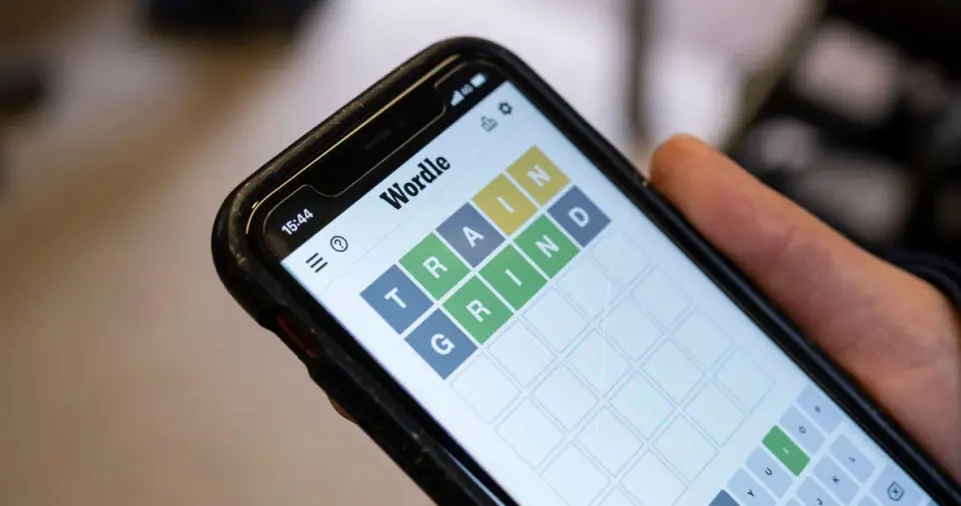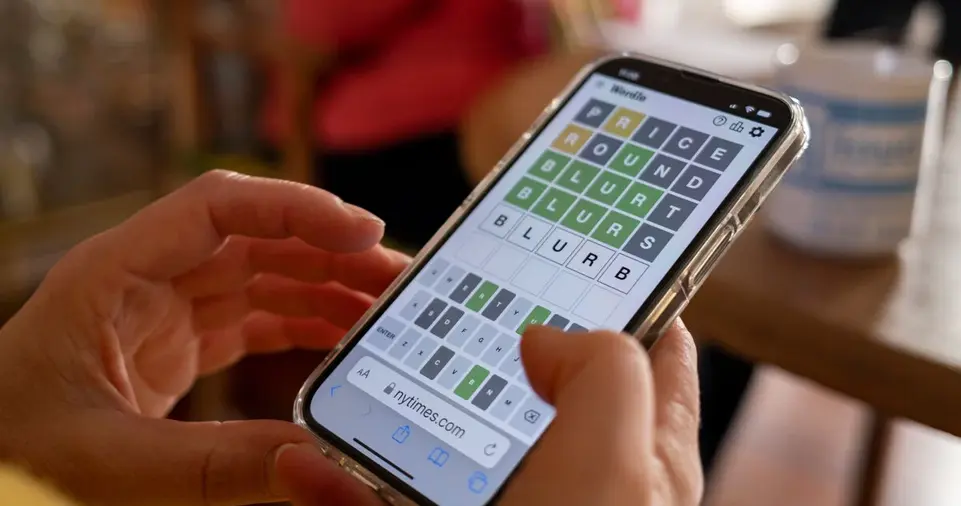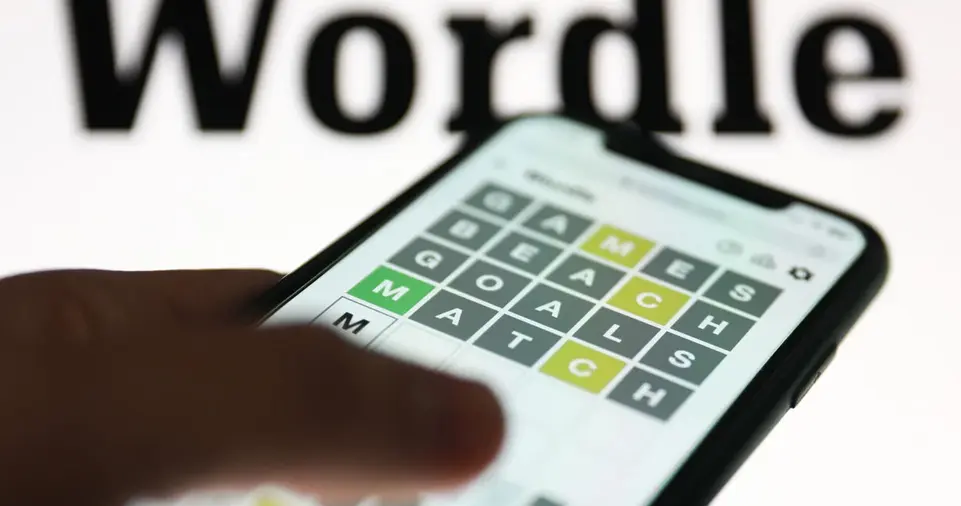The most popular online words games Wordle has become one of , captivating millions of players around the world with its simple yet challenging gameplay.
The game gives you six attempts to guess a secret five-letter word, and after each guess, you receive feedback in the form of color-coded tiles.
Yellow means the letter is in the word but not in the correct position, green means it’s in the correct position, and gray means the letter isn’t in the word at all.
Choosing the best starting word is critical in Wordle because it sets the tone for your entire game.
An effective starting word can maximize the information you gain with each guess, helping you eliminate possibilities and get closer to the solution.
But how do you choose the right word? What criteria should you use to increase your chances of success in the fewest guesses possible?
In this guide, we’ll explore the key strategies for selecting optimal starting words.
From understanding letter frequency and vowel placement to considering word structure and feedback, this article will give you a comprehensive understanding of how to approach Wordle.
Whether you’re new to the game or looking to refine your skills, this guide will help you play smarter and more efficiently.
The Importance of Choosing the Right Starting Word
Why Starting Words Matter in Wordle
In Wordle, the goal is to guess the correct five-letter word in as few attempts as possible.
The game provides valuable feedback after each guess, but without a solid starting word, you may not get enough information to make educated guesses.
The first word you choose plays a critical role in how quickly you can solve the puzzle, and the right word can give you a substantial advantage.
A good starting word is one that maximizes the amount of information you get from each guess.
This means including a mix of vowels and consonants, as well as letters that frequently appear in five-letter words.
This strategy allows you to quickly rule out possibilities and narrow down your guesses, making each subsequent attempt more informed.
The Goal: Maximizing Information Early On
The key to a successful Wordle strategy is to maximize the amount of information gained with each guess.
In the first few moves, you want to focus on gathering as many clues as possible about which letters are in the word and where they might be located.
A strong starting word will:
Test a variety of common vowels and consonants:
Vowels like A, E, and O are essential to guess early, as they appear in many five-letter words.
Including common consonants helps you rule out or confirm frequently used letters.
Avoid repetition:
By choosing a word without repeating letters, you can test a larger pool of possible letters in one guess.
Provide letter placement feedback:
A good starting word can help you determine if certain letters are present in specific positions, giving you an advantage as you move on to your next guesses.
Key Elements of an Effective Starting Word

Vowel Placement: Why Vowels Are Critical
Vowels are an essential part of any five-letter word. In fact, many five-letter words contain at least two vowels.
The most commonly used vowels in English words are A, E, I, O, and U.
Understanding which vowels are most frequently used can help you select a starting word that maximizes your chances of hitting a vowel early on.
When selecting your starting word, aim to test multiple vowels in one guess.
This allows you to quickly determine which vowels are present in the word, or rule them out entirely if they don’t appear in the feedback.
Examples of vowel-heavy starting words:
- AUDIO: Tests four different vowels (A, U, I, O), giving you immediate feedback on whether any vowels are in the word.
- EAGER: Contains common vowels like A and E, while testing a mix of consonants as well.
Consonant Usage: Picking the Right Consonants
In addition to vowels, consonants are crucial to finding the target word.
Certain consonants appear more frequently than others in five-letter words, so it’s important to choose words that test these consonants early on.
Some of the most common consonants in English words include:
- T, N, S, R, L, C, D
These letters are more likely to appear in the target word, and by testing them in your starting word, you can gain valuable insight into the puzzle.
A good starting word will incorporate several of these common consonants, helping you rule out or confirm their presence early in the game.
Examples of consonant-heavy starting words:
- STARE: Contains common consonants like S, T, and R, along with the vowel A.
- CRANE: A balanced mix of common consonants (C, R, N) and vowels (A, E).
Letter Frequency and Positioning
In Wordle, letter frequency plays a vital role in choosing a good starting word.
Letters like S, T, N, R, and L are among the most frequently used consonants in five-letter words.
By including these letters in your starting word, you increase the chances of hitting a correct letter early on.
Additionally, letter placement can provide insight into where specific letters might be located within the word.
For example, the letter T is often found in the beginning or middle of words, so using a starting word that places T in these positions can give you useful clues.
Examples of strategically placed letters:
- SLATE: Uses S and L in the beginning, testing both vowels (A and E) in critical positions.
- CRISP: Includes common consonants like C and S, and places them at the beginning or middle of the word.
Best Starting Words for Wordle

SLATE: A Well-Rounded Starting Word
One of the best starting words for Wordle is SLATE. This word covers a wide variety of frequent letters, including S, L, A, T, and E.
It tests both common vowels and consonants, giving you a solid starting point to deduce which letters are present in the target word.
Why it’s effective:
SLATE covers both vowels and consonants, and it places the vowels A and E in the middle and end of the word.
The consonants S, L, and T are also commonly found in many words, making this a great option for your first guess.
CRANE: A Balanced Mix
Another great starting word is CRANE. This word contains a good combination of frequent consonants like C, R, and N, along with the vowels A and E.
It helps you quickly determine which vowels are in the word, while also testing some of the most common consonants.
Why it’s effective:
CRANE is a balanced word that allows you to test five different letters in one go.
It’s especially useful for ruling out or confirming the presence of A, E, and common consonants like R and N.
AURAE: A Vowel-Focused Word
If you want to focus on vowels early on, AURAE is an excellent choice.
This word contains four vowels (A, U, R, E), allowing you to quickly determine which vowels are in the word.
Why it’s effective:
AURAE maximizes your chances of identifying which vowels are present in the word.
It’s particularly useful when you want to rule out or confirm the presence of the vowel U early in the game.
REACT: A Smart Combination of Letters
REACT is another strong option, as it contains common vowels and consonants.
The letters R, E, A, C, and T are among the most frequently used in five-letter words.
Why it’s effective:
REACT covers multiple positions with frequently used vowels and consonants.
It helps you gather essential information about the word’s structure and narrow down possibilities.
How to Adjust Based on Feedback
Interpreting Wordle Feedback: Green, Yellow, and Gray
After each guess, Wordle provides feedback in the form of color-coded tiles:
- Green: The letter is in the word and in the correct position.
- Yellow: The letter is in the word but in the wrong position.
- Gray: The letter is not in the word at all.
By analyzing this feedback, you can adjust your next guess and make more informed decisions.
For example, if a letter turns green, you know it’s in the correct position and should try to use it again in future guesses.
If a letter turns yellow, it’s in the word but needs to be placed in a different position.
Making Adjustments After Each Guess
After your first guess, use the feedback to eliminate possibilities. For example, if a letter turns gray, avoid using it in your next guess.
If a letter turns yellow, try it in a different position. As you progress through the game, you’ll narrow down your options and be able to make smarter guesses.
Conclusion
Choosing the best starting words for Wordle is essential for maximizing your chances of solving the puzzle quickly.
By selecting words that incorporate common vowels and consonants, you can gather valuable feedback from each guess.
Words like SLATE, CRANE, and AURAE offer a balanced mix of frequently used letters and provide you with the information you need to make educated guesses.
Remember, the key to success in Wordle lies in the strategy you employ, the letters you test, and how you use the feedback to adjust your guesses.
By following the tips and strategies outlined in this guide, you’ll be well on your way to becoming a Wordle master. Happy playing!

